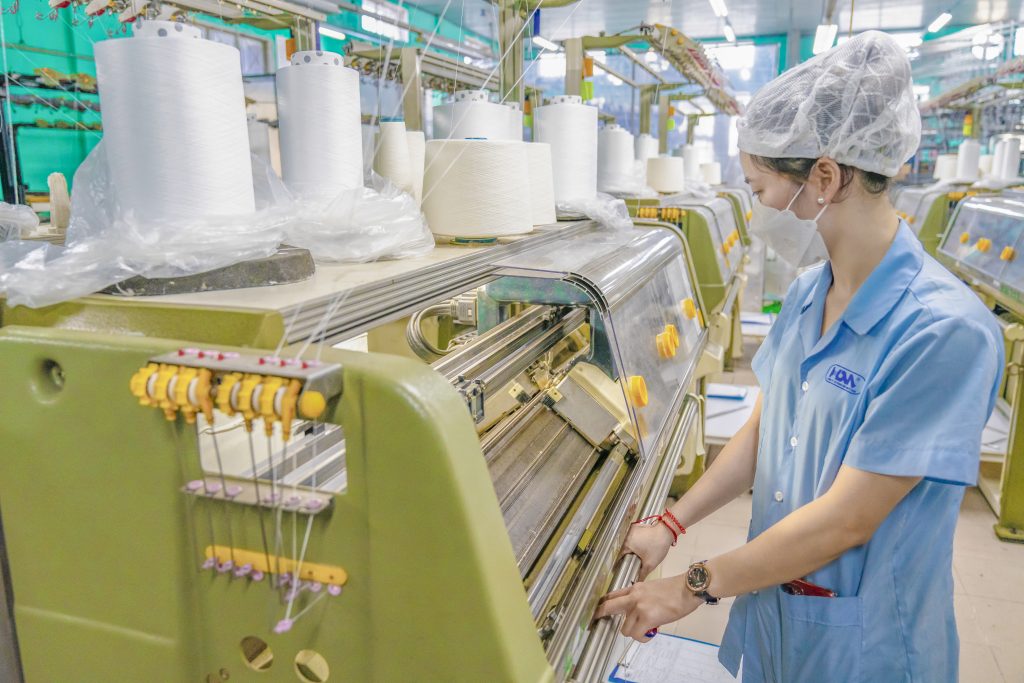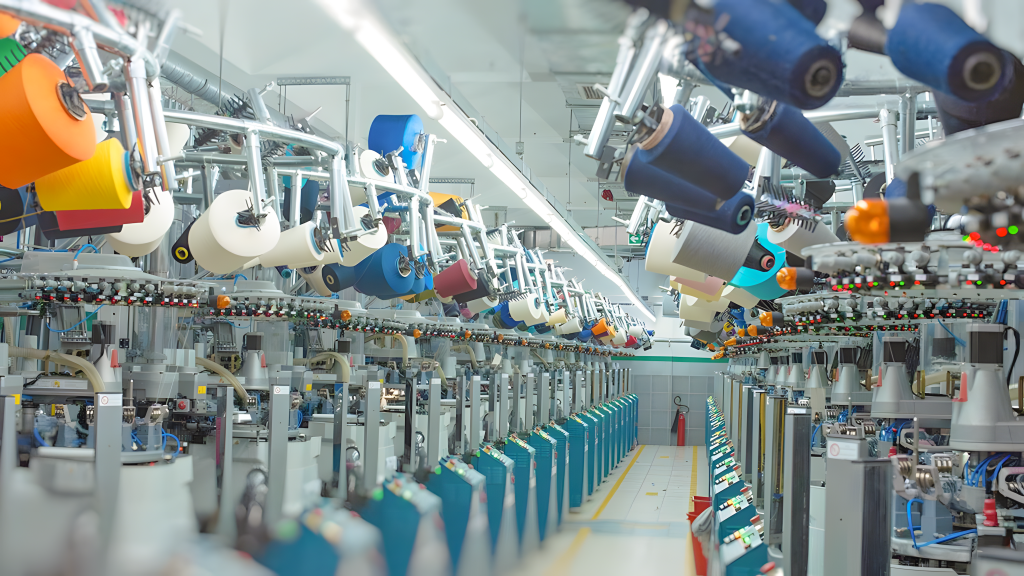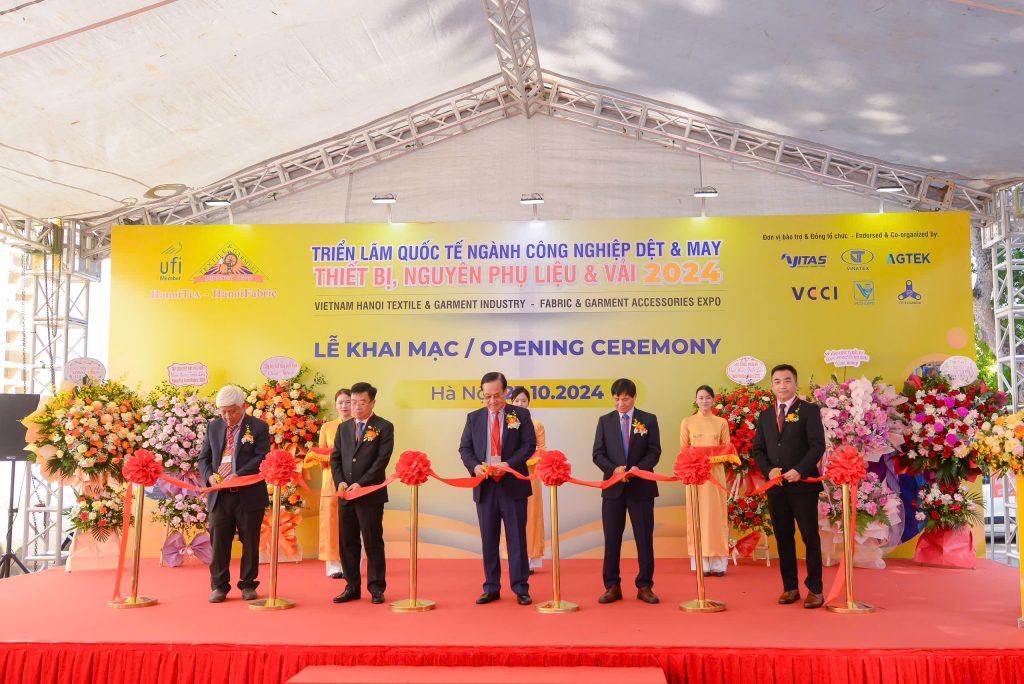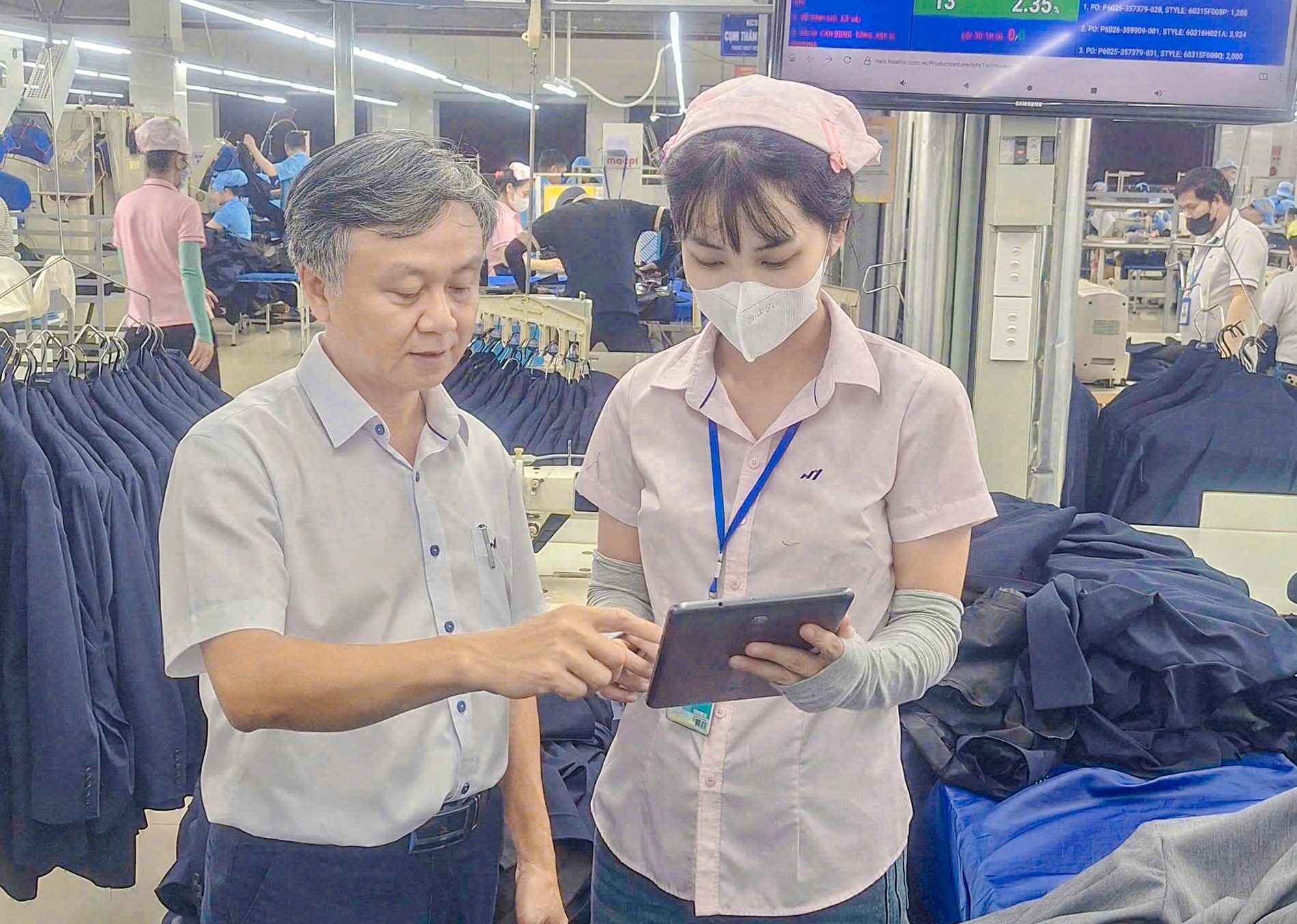Vietnam National Textile and Garment Group (Vinatex) has been affirming its solid position in the textile industry, not only playing a crucial role as a key pillar of the national economy but also leading the development of the entire sector. With over 30 years of establishment and growth, Vinatex has significantly contributed to making Vietnam’s textile and garment industry one of the country’s top export sectors, accounting for a large proportion of national export turnover.

A Crucial Link in the Internal Supply Chain
As the first link in Vinatex’s supply chain, the Yarn sector holds a crucial role—not only in terms of utilizing vast resources but also in directly impacting the efficiency, sustainability, and competitiveness of the entire supply chain. Specifically, the Yarn sector provides finished yarn materials, determining the quality of input materials for the Textile sector. This, in turn, produces high-quality fabrics to meet the ever-evolving market demands and serves as the foundation for the Garment sector to manufacture premium apparel, capable of competing in demanding markets such as the EU, the U.S., and Japan.
The Yarn sector also plays an essential role in shaping fashion trends by developing specialty and high-tech yarns that allow the Textile sector to optimize dyeing and weaving processes, maximizing the functionality of yarns and enhancing value across the entire supply chain. Additionally, the Yarn sector supports the Textile and Garment sectors in meeting rules of origin requirements under Free Trade Agreements (FTAs). Securing a stable internal supply of high-quality yarn not only enables Vinatex to leverage tariff incentives but also minimizes risks from external supply fluctuations, ensuring flexibility in production and rapid market responsiveness.
The Yarn sector is not just the starting point but also a key link in Vinatex’s internal supply chain. The close integration between Yarn, Textile, and Garment operations is the foundation for building a robust internal supply chain, aligning with the Group’s strategic “One Stop” model. This integration strengthens Vinatex’s competitiveness in both domestic and international markets.
Overcoming Challenges in the Yarn Sector
In recent years, the Yarn sector has faced significant challenges, including sensitivity to macroeconomic fluctuations, weak interconnectivity among supply chain units, and inconsistencies in governance, which have led to operational disparities. Therefore, a clear strategic direction and well-defined steps are critical to overcoming these challenges and maintaining the Yarn sector’s vital role in the supply chain.

Three Pillars for Breakthrough Development
By 2025, the Yarn sector is expected to face fierce price competition, as processing costs continue to rise with little room left for cost reductions. To achieve its 2025 targets and beyond, Vinatex’s Yarn sector must focus on three core pillars: product innovation, operational efficiency, and supply chain management. These strategies will be executed through concrete action programs to optimize effectiveness.
The first crucial factor is improving operational quality and enhancing production efficiency across all member units. A synchronized approach to product and process quality improvement is necessary, ensuring that stronger units support weaker ones by sharing knowledge and resources. This fosters uniform growth across the entire industry, in line with the directives of Vinatex’s leadership.
Given the constantly changing global market landscape and the impacts of economic, geopolitical, and national conflicts, the Yarn sector must adopt flexible strategies in sales and market positioning. Expanding beyond China into potential markets like South America, Southeast Asia, and FDI markets will help reduce dependence on a single market and elevate Vinatex Yarn’s global competitiveness.
Furthermore, investing in modernizing equipment and replacing outdated machinery with high-tech, automated systems will improve productivity and product quality while reducing labor intensity. Aging machinery, particularly Chinese-imported equipment, will be phased out in favor of advanced technology from G7 nations, optimizing operational costs and boosting competitiveness.
Another key strategy is strengthening supply chain management. Establishing strategic partnerships with domestic and international suppliers ensures a stable raw material supply at competitive prices. Additionally, integrating digital technologies and smart management systems will enhance transparency, improve demand forecasting, optimize inventory, and minimize waste. The sector will also accelerate digital transformation, complete ERP systems, and enhance real-time management capabilities.
In the long term, investment in research and development (R&D) is essential to create high-value-added yarn products that align with sustainable consumption trends and stringent international brand requirements. Developing eco-friendly yarns, recycled fibers, and specialized yarns with features like fire resistance, antibacterial properties, wrinkle resistance, and moisture absorption will be key growth directions. Product innovation will not only enhance the Yarn sector’s competitive edge but also position Vinatex as a premium, environmentally friendly, and transparent yarn supplier. This approach will help integrate the Yarn sector deeper into the global supply chain while aligning with sustainable development trends.
With a clear strategic vision and concrete implementation steps, Vinatex’s Yarn sector is committed to overcoming current challenges, reinforcing its core role in the textile value chain, and contributing to the sustainable growth of Vinatex in the coming years.
30 Years of Vinatex – A Journey of Transformation
As the “starting point” in the textile value chain, the Yarn sector has experienced both highs and lows. It has blended into Vinatex’s proud 30-year journey, witnessing and accompanying the Group’s remarkable transformation. This journey is not just about expansion but a testament to Vinatex’s aspiration to elevate Vietnam’s textile brand on the global stage.
From its early days with limited infrastructure, outdated technology, and intense market competition, Vinatex has faced numerous challenges. However, these hardships have fostered a resilient, innovative, and forward-thinking workforce, enabling Vinatex to rise as a leader and a powerful symbol in Vietnam’s textile industry. Vinatex’s achievements are not only reflected in impressive export figures but also in the core values it continues to create—providing stable livelihoods for hundreds of thousands of workers, contributing significantly to the national budget, and elevating the “Made in Vietnam” brand as a symbol of quality, creativity, and Vietnamese resilience.
Vinatex’s success over the past 30 years stems from long-term strategic vision, relentless innovation, and adaptability to challenges. The Group has built a strong foundation through comprehensive value chain development, investment in advanced technology, and workforce training. Additionally, its ability to navigate globalization, expand export markets, and commit to sustainable development has solidified Vinatex’s leadership in both Vietnam and the global textile industry.
Notably, Vinatex’s 30-year journey reflects generational succession and growth. Every leader and employee, from pioneers to the present generation, has played a vital role in shaping Vinatex’s sustainability. Like individual threads woven together, their collective dedication has created a vibrant tapestry of Vietnam’s textile industry, reinforcing the Group’s resilience and determination to overcome even the toughest challenges, such as the COVID-19 pandemic and intense global competition.
Box: Vinatex’s 30-year journey is a proud legacy, yet it marks only the beginning of even greater aspirations for Vietnam’s textile industry. With a solid foundation and pioneering spirit, Vinatex will continue to strengthen its position—not just as a leader in textiles but also as a symbol of sustainable development and social responsibility. It will contribute to Vietnam’s economic prosperity and elevate the national brand on the global stage.





